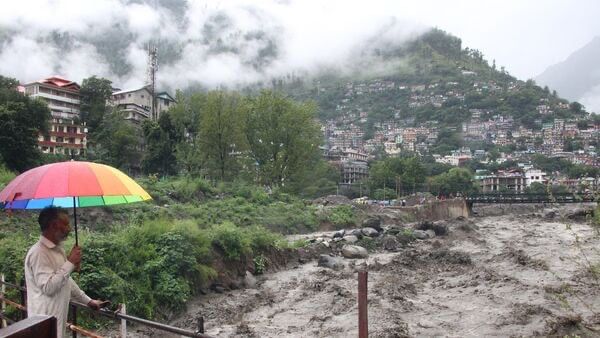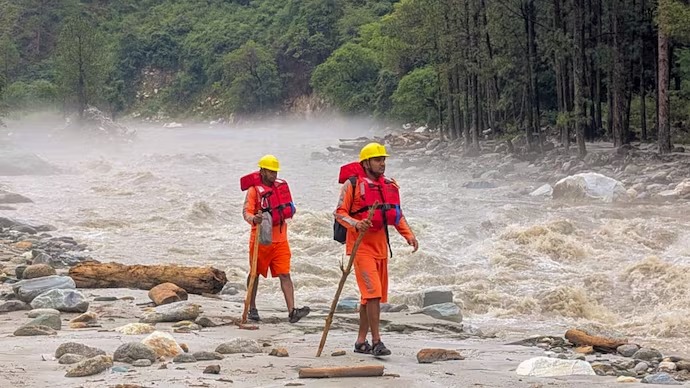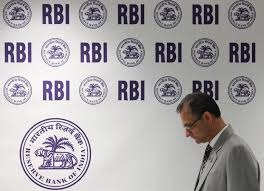 Image Source: Mint
Image Source: Mint
Himachal Pradesh is grappling with widespread disruption following heavy monsoon rains that have battered the region since early August 2025. The persistent downpours have triggered landslides, road blockages, power outages, and communication breakdowns, severely impacting normal life and prompting urgent government responses.
Key Highlights of the Rainfall Impact
A staggering total of 355 roads have been blocked across multiple districts due to landslides, flooding, and waterlogging, hindering movement and supply chains.
Over 1,000 electrical transformers have suffered damage or disruption, resulting in frequent power outages and affecting thousands of households and businesses.
The India Meteorological Department (IMD) issued orange alerts for heavy to very heavy rainfall in districts such as Kangra, Mandi, Sirmaur, Shimla, Bilaspur, and Kullu from August 13 to 16.
Yellow alerts followed for other parts including Una, Hamirpur, Chamba, Solan, and Hamirpur till mid-August, forecasting continued moderate to heavy rain.
Some areas recorded very heavy rainfall in short spans, with IMD warning of isolated spells of extremely heavy rain (above 10 cm per 24 hours) over localized regions.
The rains caused several landslides and road damages, eliciting evacuations and distress for residents in vulnerable zones.
The disaster management teams, public works departments, and power utilities have mobilized to restore infrastructure and clear debris.
District-wise Effects and Response
Kangra and Mandi experienced continuous rain that caused flooding and road blockades on key routes, disrupting access to remote hilly villages.
Shimla district witnessed landslips that blocked highways and urgent clearance operations were underway to restore connectivity.
Power disruptions were most prominent in Kullu and Sirmaur, where affected transformers led to blackouts lasting several hours.
Basic services like water supply and communication faced interruptions, with authorities deploying backup generators and repair crews.
Government and Authorities’ Actions
State disaster response teams remain deployed in flood and landslide-prone areas, conducting rescue operations and relief measures.
The Public Works Department works round the clock to clear blocked roads and restore access to isolated communities.
Electrical departments have prioritized the replacement and repair of transformers, coordinating with local bodies to minimize inconveniences.
The government has issued advisories urging locals to stay indoors, avoid non-essential travel, and follow warnings issued by weather officials.
Emergency helplines and information centers have been activated for the public to report damages or seek assistance.
Outlook and Precautionary Advisory
The India Meteorological Department forecast continued rainfall over Himachal Pradesh till August 18, with moderate to heavy spells expected in several districts.
Authorities emphasize caution during travel, especially in mountainous terrains vulnerable to sudden landslides.
Residents in low-lying and flood-prone areas are encouraged to stay vigilant, secure essential supplies, and heed evacuation instructions if necessary.
Economic and Social Implications
The heavy rains and infrastructure damage have interrupted agricultural activities, market supplies, and tourism flows, vital pillars of Himachal’s economy.
School closures and disruption of transport services have affected daily routines for thousands of residents.
The government has pledged to fast-track restoration and rehabilitation efforts to mitigate long-term impacts.
Conclusion
The ongoing heavy rainfall and resulting widespread disruption in Himachal Pradesh underscore the challenges posed by seasonal monsoons in the Western Himalayas. While the state’s authorities and disaster response mechanisms are actively engaged, the need for enhanced infrastructure resilience and community preparedness gains renewed focus to better face such climactic adversities in the future.
Sources: India Meteorological Department, Hindustan Times
Advertisement
Advertisement





